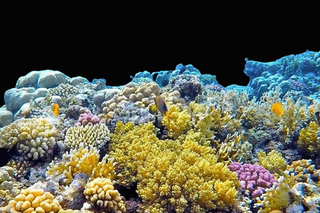
How Scientists Are Using a Stock Market Theory to Save Coral Reefs
The research recommends investing in 50 coral reef conservation projects that have the “strongest potential to succeed.”

It’s not often we use the phrases “stock market” and “environmental conservation” in the same sentence. Yet, an award-winning, internationally-renowned economic theory could save threatened coral reefs, scientists believe.
The modern portfolio theory, or MPT, can be described as an investing strategy that helps people select their investments in a manner, which will maximize their overall returns while ensuring they stay within an acceptable level of risk. It was pioneered by Harry Markowitz, an American economist, in 1952. Subsequently, in 1990, it received the Alfred Nobel Memorial Prize in Economic Sciences.
Published in Conversation Letters, the new study proposes investing in 50 conservation projects that have the “strongest potential to succeed.” This would involve identifying 50 reefs, or coral sanctuaries, from across the globe that have the highest chances of surviving climate change, and can eventually be used to repopulate other reefs too.
“It’s treating conservation sort of as an investment opportunity… It’s essentially a strategy to help us make decisions about what to protect, if we are to have corals at the end of the century… It is our best shot at having a long-term future for coral reefs,” Ove Hoegh-Guldberg, a climate scientist at the University of Queensland, who co-authored the study, said about the application of the MPT in conserving coral reefs.
Related on The Swaddle:
A Mysterious, Fatal Coral Disease in the Caribbean Is Linked to Wastewater from Ships: Study
“You’ve got hundreds of these reefs across the planet… Which one do you pick, so that you concentrate your efforts on it?” Hoegh-Guldberg added, explaining that the MPT can help conservationists identify the reefs they must focus their energies on.
“You don’t want to put all your eggs in one basket, or bet on one measure of risk, when we have massive uncertainty about what the risks will be,” said Hawthorne Beyer, a fellow at the University of Queensland, whose research involves studying the role of quantitative modeling in the management of environmental systems. Beyer, who was also the first author of the study, called the application of the MPT to conservation a “very logical idea [that] makes a lot of sense.”
Global warming, which has assumed the form of a colossal threat to coral reefs, causes bleaching — when corals lose their vibrant colors and turn white. In most cases, this indicates coral reef death. “[However,] bleaching is not always a death sentence for corals, the coral animal can still be alive. If the stress event is mild enough, corals can re-establish the symbiosis with their algal partner. Unfortunately, recent episodes of global bleaching caused by unusually warm water have resulted in high coral mortality, leaving the world’s coral reefs struggling for survival,” Cecilia D’Angelo, a lecturer of molecular coral biology at Southampton, had said.
Coral reefs cover less than 1% of the Earth’s surface, and less than 2% of the ocean bottom. But due to the diversity of the marine life they are home to, they have been named the “rainforests of the sea” with almost a quarter of all ocean species relying on them for sustenance and shelter. Besides threatening biodiversity, the death of corals could also affect the lives and livelihoods of communities that rely on coral reefs for fishing and tourism.
Related on The Swaddle:
Sharks Have Disappeared From 20% of Coral Reefs Worldwide: Study
Over the past decade, several initiatives to mitigate the impact of climate change on coral reefs are underway. A research team in Hong Kong is using 3D-printed terracotta “reef tiles” to rebuild coral reefs. Another artificial reef made of sand-based concrete rests at the Calanques National Park in France — with similar restoration efforts ongoing in the Caribbean and the Mediterranean, too. Meanwhile, scientists in Australia are using a cloud brightening prototype on the cloud cover above the Great Barrier Reef, to prevent bleaching.
There is still some time until any of the initiatives can be deemed successful — but we’re all hopeful.
Researchers of the present study, too, are looking forward to the application of the MPT to conservation bearing fruit. “One of the biggest benefits of the ’50 reef approach’ has been this compelling message that climate change is the critical threat to coral reefs and this is an approach that can give reefs a fighting chance,” co-author Emily Darling, from the department of ecology and evolutionary biology at the University of Toronto in Canada, notes.
“It’s an unlikely way of going about it — but climate change seems tailor-made for unconventional solutions and unexpected theories,” an article on Inside Hook commented.
Devrupa Rakshit is an Associate Editor at The Swaddle. She is a lawyer by education, a poet by accident, a painter by shaukh, and autistic by birth. You can find her on Instagram @devruparakshit.
Related


Scientists Find a Way to ‘Catapult’ Rockets Into Space Like ‘Slingshots’
